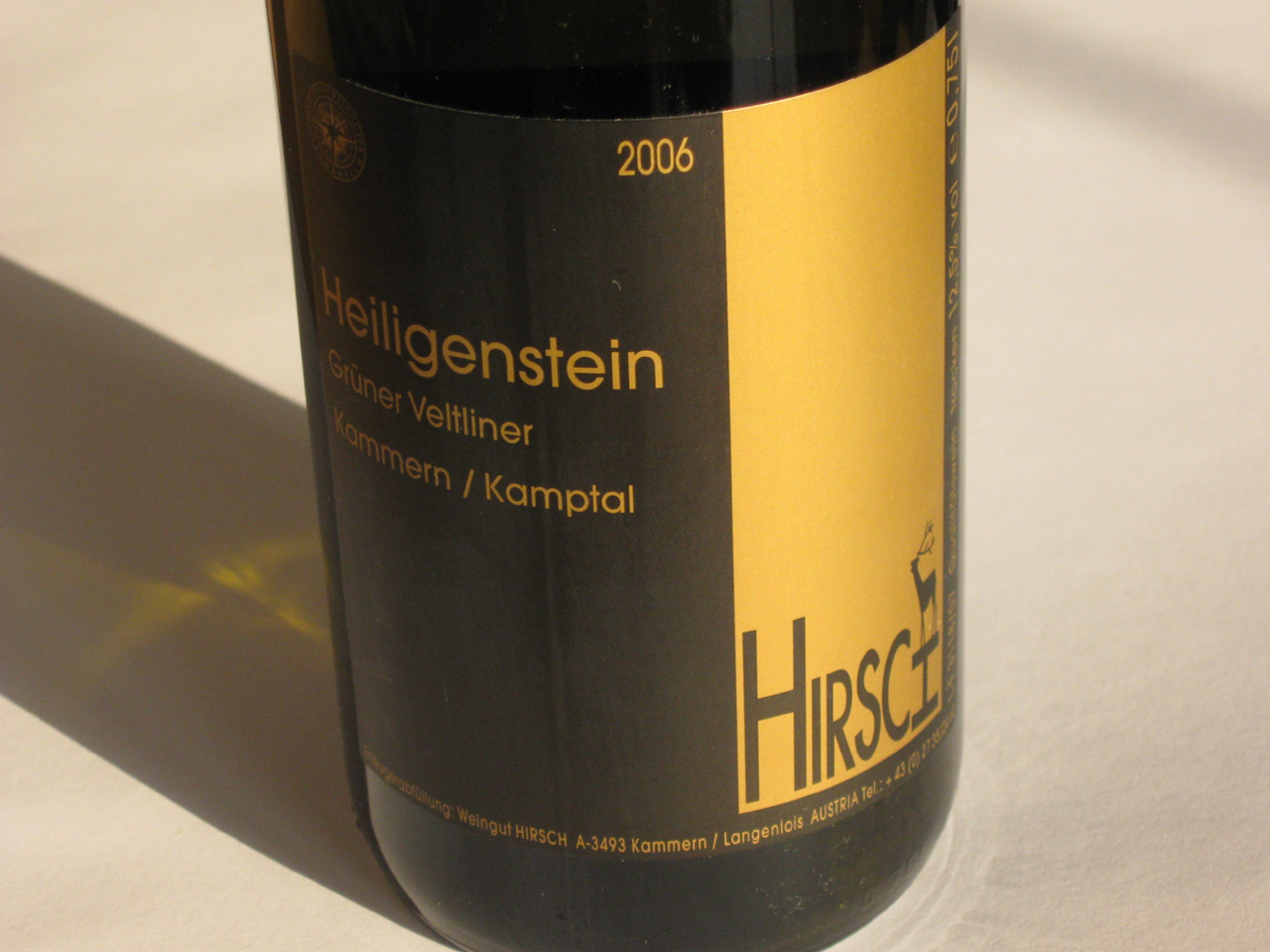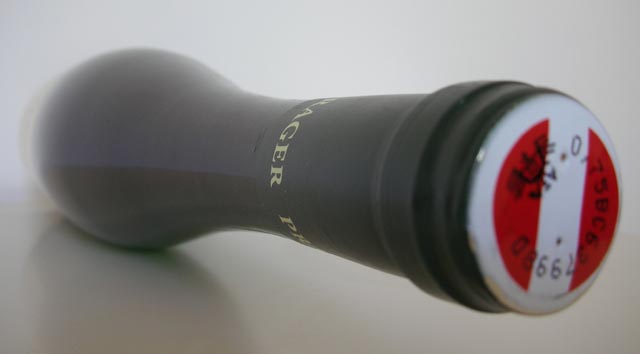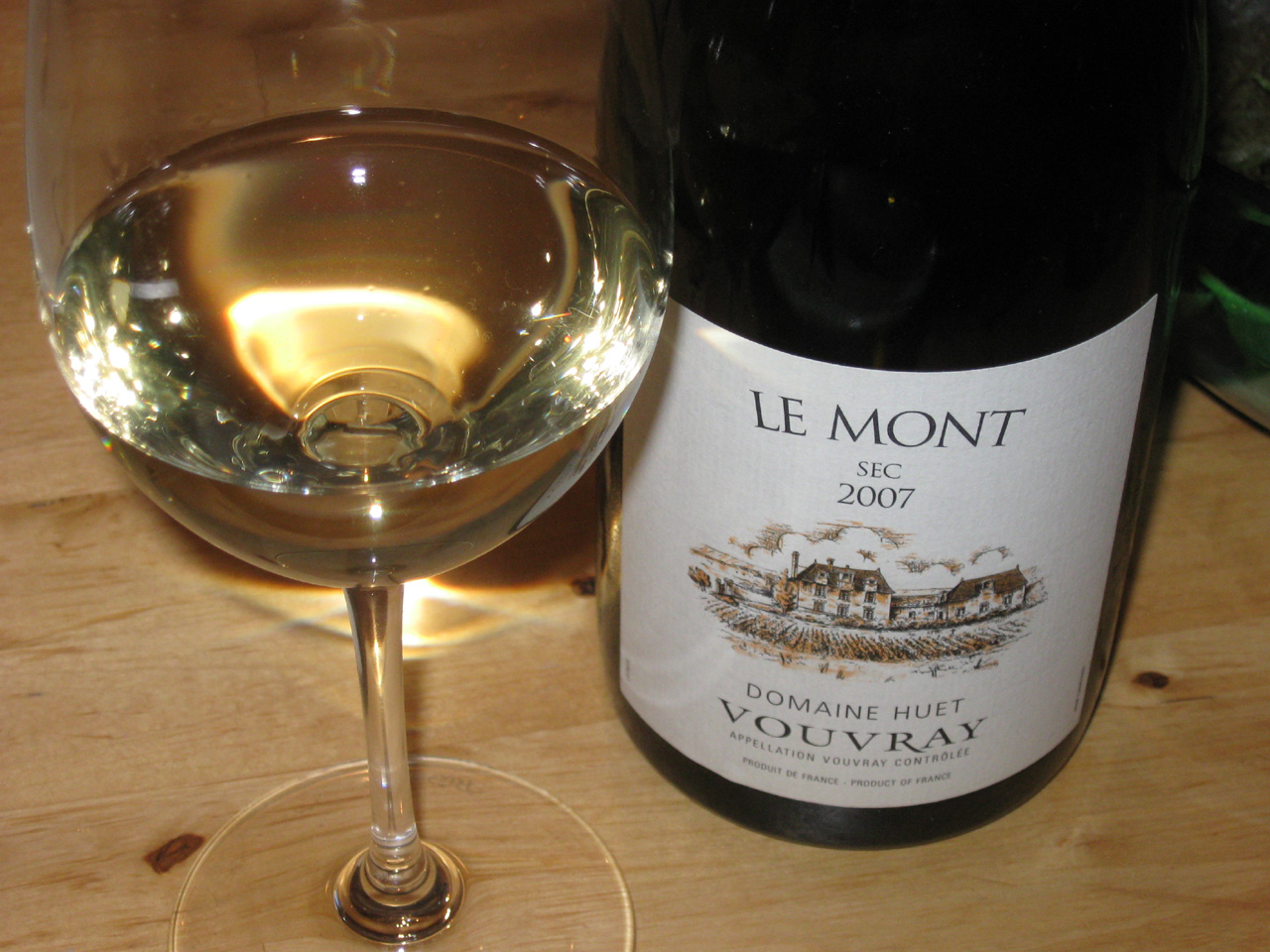Lukas Krauß, Silvaner trocken, 2009
Our friend Lukas Krauß needs no introduction here, so let's get straight to the breaking news:
*Lukas Krauß 09 collection of whites is out * Wine Rambler to review 09 Silvaner *

Our friend Lukas Krauß needs no introduction here, so let's get straight to the breaking news:
*Lukas Krauß 09 collection of whites is out * Wine Rambler to review 09 Silvaner *

A few months ago I was browsing the web store of one of the Wine Rambler's favourite German wine merchants (Behringer). While going through the Pfalz selection, I came across a dry Riesling that despite having been rated at 90/100 by the German wine guide Gault Millau still sold at only €8. As I needed to resupply on dry 'everyday' Riesling anyway, I ordered a bottle to find out what the fuzz was all about.

Having had a fun afternoon sipping austrian wines recently, I dediced it was time for another foray into the territory of Grüner Veltliner, also known as "Groona" in the Vayniac universe. The austrian national grape, Grüner Veltliner makes for powerfully spicy, herbal and mineral whites, if, and only if, handled expertly by ethnic austrians with Veltliner strains in their genome. Johannes Hirsch from the Kamptal clearly qualifies here. We have tasted his 06 Heiligenstein a year ago with a very respectable, but didn't-blow-our-socks-off kind of result. So what has an additional year of bottle age done for this wine?

Gunter Künstler certainly has a reputation for making outstanding Riesling. Many of his vineyards in the Rheingau are planted with old vines (think 50 years plus), or 'Alte Reben', as the Germans say. The Stielweg vineyard, where today's dry Riesling comes from, features loam-clay soil; the name comes from 'steep path', or 'steiler Weg'. The website sums the vineyard up as: 'The wine from these 50 year old Stielweg vines radiates aristocratic strength and nobility.' So what do we think?

The Haart winery is a Wine Rambler regular, constantly winning our praise for their elegant and sophisticated sweet Riesling. However, they are also producing a small quantity of dry Riesling, of which we so far shockingly have only reviewed one. This is to change today.

A simple way of describing the bouquet of the Haart Riesling would be to say that it features stone fruit, lemon, mineral, yeast and a hint of vegetable and tobacco. A much better way of describing it would be to ask you to imagine finding an old tobacco chest in a cool, somewhat damp, loamy cave. The bottom layer of the chest would be covered with ground stone and earth, generously sprinkled with lemon juice and pieces of stone fruit - and all of that covered with a wet, mineral heavy ball of cotton wool soaked in yeast.
Before we give this unexpectedly gorgeous rosé from - get this - Württemberg its due, a word about its grape variety: Muskattrollinger is a cross between - you'd never have guessed it - Trollinger and Muscat that has been grown in Württemberg since the mid 19th century. Trollinger is the signature grape of Württemberg and usually produces very light, unmistakeably fruity reds - usually. Muscat is well known and adds its trademark floral explosiveness to the genetic mix.
And what a mix it is: It starts with an appetising salmon-copper-colour. It has red and white currants (yeah, get the white currants), gooseberry, elderberry and orange in its smell, and great fresh acidity and intensive spicy and floral fruit flavours in its taste. Wonderfully light on the alcohol as well. We are not known as the world's greatest rosé advocates here at the Wine Rambler, but you simply need to call a killer wine a killer wine.

The subject of German red wine would certainly deserve a whole series of postings, for instance making the point that there is a lot of it (about a third of all grapes grown in Germany are red) and that it is not just wine of a lighter type. For today I leave the wider context aside and focus on a wine that is an example of a more substantial type German red, a blend of different varietals including Cabernet Sauvignon and Dornfelder. Winemaker Friedrich Becker is a well known specialist for red wine, with the red wine cuvée Guillaume being one of the cheaper wines from a range that can be quite pricey (just recently I saw one of his premier Pinot Noirs in a Munich department store for around a hundred Euro).

Both my co-Rambler and I recently came to the conclusion that we had somewhat neglected Austria - a country that makes some truly outstanding wines. So Julian went off to have an afternoon of Austrian wine, during which he was particularly impressed with a Riesling made by the Prager winery. At about the same time I found myself talking Prager with Damian from Fields Morris & Verdin on Twitter. As I had never tried a Prager Riesling, Damian kindly provided me with a tasting sample, the 2006 Steinriegl Smaragd - a Riesling that is more than just a reminder of how good Austrian wine can be.

As far as wine is concerned, there is much more to California than just Napa Valley or Sonoma. In fact, one of the Californian wineries that so far has impressed me most is located a little bit further south, in Santa Maria Valley: Jim Clendenen's Au Bon Climat. On election day in the UK, when a risotto was slowly cooking in the kitchen, it was time to open a Californian Pinot Noir to support us through the long night.

Lime, peach, mineral, herbs, peach, lime, good acidity - I do actually feel a little sorry for using these words here over and over again. But what can I do, these German Rieslings are just very good at delivering that - and the 2008 dry Riesling from the Emrich-Schönleber winery is no exception. In fact, it is a good example for a dry, crisp and fresh wine of this type that also comes at a reasonable price (especially if you take into consideration that it comes from one of Germany's most prestigious wineries).

One of the less exciting things about living in London is not having a cellar. I sometimes feel a certain envy towards friends on the continent who 'of course' have a cellar and can put age-worthy wines away for a few years or even decades. So whenever I can get my hands on an aged wine I get pretty excited. Quality Riesling, particularly the sweeter ones, can age very well, but if you buy a twenty year old one it is always a gamble. Luckily, I got this one directly from the winery, so I was fairly certain it had been stored properly. Ladies and gentlemen, I present a good ol' boys Riesling from the Moselle:

These days, I find myself drinking more and more Weißburgunder (Pinot Blanc). It can be very food friendly (especially when you go for lighter food, fish and the seasonal asparagus (even though the latter is always a bit tricky)) and I enjoy the contrast to the sharper Riesling. A particularly good and typical recent example for Weißburgunder came from the Saar river, very close to the Mosel. It looked a little bit like this:

With at least one Wine Rambler new year's resolution still unfulfilled, a sense of duty and self-discipline finally compelled me to open a Loire white. I also wanted to try one of the esoteric, hyper-regional french wines that the really knowledgeable cats like Cory Cartwright from Saignée are always on about. I had hoped for something original to broaden my wine horizon, but this Chenin Blanc from a legendary Vouvray producer turned out to be rather more - a real shock to the Riesling-saturated system.
